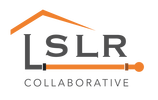Coordination and Partnership
|
Engaging with established community groups, health departments, elected officials, and/or non-government organizations (NGOs) with local experience advancing equity is an important part of ensuring equity in LSL replacement programs. Such partners often have strong relationships and experience working within a community or region and may already have much of the information needed for an equity analysis. They may also have additional resources and programs tailored to individual communities to guide equity analyses. For example, the City of Madison, WI and City of Seattle, WA each prepared equity analysis assessments to aid in incorporating equity into planning and development activities. Collaboration with these partners can increase efficiency and engender greater community participation, buy-in, and support for LSL replacement programs. Such coordination requires clear and open communication, particularly when one water utility serves multiple communities with separate local governments. Oftentimes local efforts will draw on the capacity of regional planning agencies that serve metropolitan areas or groups of counties. The regional planning agency serving your community may be a helpful resource. If you do not already know your regional planning agency, contact your state’s association of regional planning agencies or the state office that supports local government planning. Coordination with State Agencies When preparing an equity analysis as part of submitting an LSL replacement plan to comply with the Lead and Copper Rule Revisions, utilities will need to address their drinking water primacy agency’s requirements. While 40 CFR 141.84(b) is broadly worded, EPA and state guidance will be drafted to:
More information on considerations for program funding, integrating capital improvement plans and community investments, local policies to enable implementation and construction related impacts are listed below. Public Health Agencies Public health agencies and community organizations can provide insight into the inequities in a community, data for equity analyses, and support for community buy-in of an LSL replacement program. Collaborating with public health organizations and community organizations can help utilities better understand the populations served and identify which indicators may be most useful in an equity analysis. |
Equitable Fund Distribution by New York State Department of Health The New York State Department of Health has made efforts to develop an equitable funding grant program to support LSL replacements. This $20 million program requires the department to allocate appropriated funds equitably among regions of state and within a region by:
|
Public Health Resources
Federal, state, and local public health agencies collect data on lead exposure risks to the community and other data that can serve as equity criteria. Such data can inform identification and prioritization of disadvantaged communities and individuals most at risk of lead exposure. Learn more about the role of public health professionals in LSL replacement.
Federal, state, and local public health agencies collect data on lead exposure risks to the community and other data that can serve as equity criteria. Such data can inform identification and prioritization of disadvantaged communities and individuals most at risk of lead exposure. Learn more about the role of public health professionals in LSL replacement.
|
National Resources
Federal agencies such as the Centers for Disease Control and Prevention (CDC) fund and collaborate with non-profit organizations such as National Center of Healthy Housing (NCHH), National Association of County and City Health Officials (NACCHO) to provide an array of resources to compile and track equity-based indicators and datasets on a national level. For some communities, these indicators may provide sufficient information to inform equity-based prioritization in LSL replacement programs. Review several national level public health resources. |
Community or State Health Assessment
Non-profit hospitals are required by the Affordable Care Act to complete periodic Community Health Needs Assessments, which describe the characteristics of the communities they serve. Community Health Needs Assessments are publicly available on hospital websites and may help identify areas that are underserved, low-income, and that have a high percentage of people of color. These assessments are customized to reflect individual communities which can aid in identifying populations with higher health risks and, therefore, a higher sensitivity to lead toxicity.
Non-profit hospitals are required by the Affordable Care Act to complete periodic Community Health Needs Assessments, which describe the characteristics of the communities they serve. Community Health Needs Assessments are publicly available on hospital websites and may help identify areas that are underserved, low-income, and that have a high percentage of people of color. These assessments are customized to reflect individual communities which can aid in identifying populations with higher health risks and, therefore, a higher sensitivity to lead toxicity.
|
State and Local Health Departments
Many state and local health departments have already completed health assessments and equity analyses in their communities. Working with these agencies can aid with identifying and prioritizing communities for LSL replacements who are at greater risk of lead exposure. Below is a template that can be used to initiate communication with public health officials. |
Take the LSLR Collaborative's matchmaking survey to get connected with the health department or water utility in your area. |
Other Community Resources
There are many community organizations that can provide resources to better understand the inequities and health disparities in communities. This can inform how LSL replacement programs can be executed equitably. These groups can include:
There are many community organizations that can provide resources to better understand the inequities and health disparities in communities. This can inform how LSL replacement programs can be executed equitably. These groups can include:
- Lead-free initiatives
- Local political organizations
- Community and religious leaders
- Human rights organizations
- Sorority and fraternity organizations and clubs
- Template: Outreach letter to community groups





